Science
Solar Eclipse 2024: Scammers are selling fake eclipse glasses, beware!
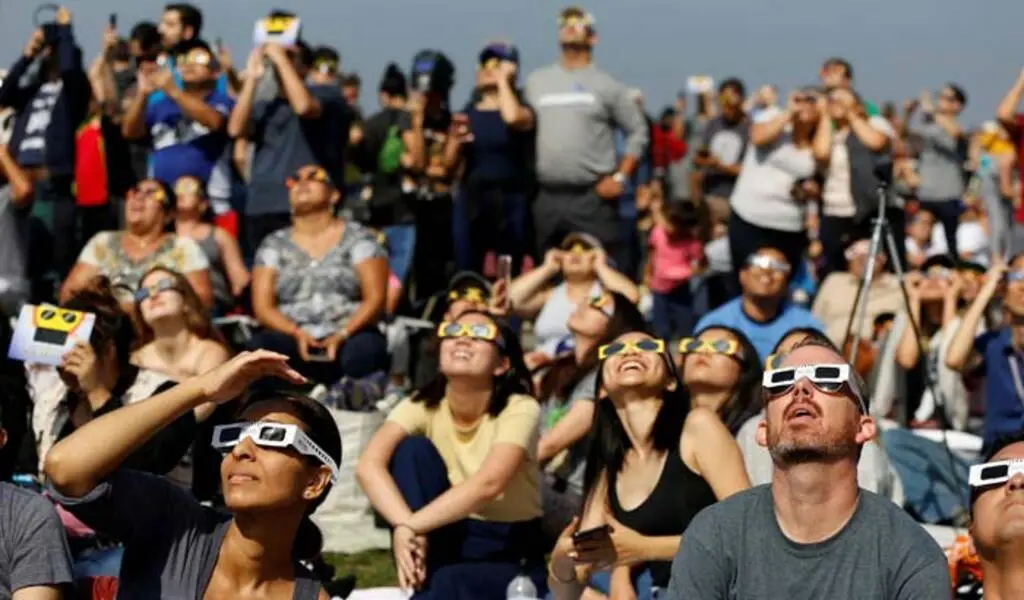
(CTN News) – A Total Solar Eclipse will occur in about ten days, but although many people are delighted to see the celestial event, some are attempting to take advantage.
The Pennsylvania Attorney General’s Office has issued a notice, warning that scammers are defrauding individuals. According to CBS News, while people rush to get their eclipse glasses, they are also being duped by scammers.
Caitlin Driscoll of the Better Business Bureau of Western Pennsylvania stated that “rare events like this, where there’s a lot of excitement, where people are looking to make specific purchases and spend money, always have a tendency to bring out scammers who capitalize on people’s excitement.”
She advised customers to avoid social media marketing and instead seek out trustworthy sellers. Driscoll highlighted that the glasses should be purchased from dealers on the American Astronomical Society’s list.
The American Astronomical Society has issued a warning that fake glasses that will not protect a person’s eyes have become widely available.
Driscoll went on to say that NASA does not authorize or promote eclipse glasses, so do not fall for that fraud either.
“So just be really cautious purchasing from random sellers and online marketplaces, even if they are claiming to get their products from a supplier approved by the AAS,” she went on to say.
Pennsylvania Attorney General Michelle Henry issued a statement encouraging people to conduct their own research. He recommended purchasing spectacles that allow safe viewing.
ORIGINAL STORY: Where to Watch 2024 Total Solar Eclipse: Everything You Need to Know
There’ll be a total solar eclipse in 2024, bringing everything to a halt as we all look up in awe as it goes through a big part of the country. Here’s what you need to know about the eclipse in 2024, plus some tasty snacks to eat.
What Is a Total Solar Eclipse?
Solar eclipses happen when the moon is between Earth and the sun and casts a shadow over Earth.”
The website added that there are different types of eclipses, including a total solar eclipse, in which the moon completely obscures the sun; a partial eclipse, in which the moon does not completely block out all of the sun’s light; an annular solar eclipse, in which the moon is centered in front of the sun but does not cover the entire surface (this is when a “ring of fire” is visible); and a hybrid solar eclipse, which Space.com describes as “the rarest solar eclipse.”
This total eclipse, a combination of a total eclipse and an annular eclipse, sees the moon’s shadow move over the Earth.
How Often Does This Happen?
A solar eclipse only happens during a new moon phase, so it’s rare. NASA says two to five solar eclipses yearly are only visible in certain places. According to NASA, “most eclipses appear partial from one location, regardless of whether the event is total or annular.” The path of totality typically covers “less than 1% of the Earth’s surface.”
Something is shocking: “On average, it’s about 375 years between two total solar eclipses.” However, the interval can sometimes be much longer!” Several communities in the U.S. will see eclipses in 2017 and 2023 when the 2024 eclipse passes by. Read More…

Science
NASA Switches Off Instrument On Voyager 2 Spacecraft To Save Power
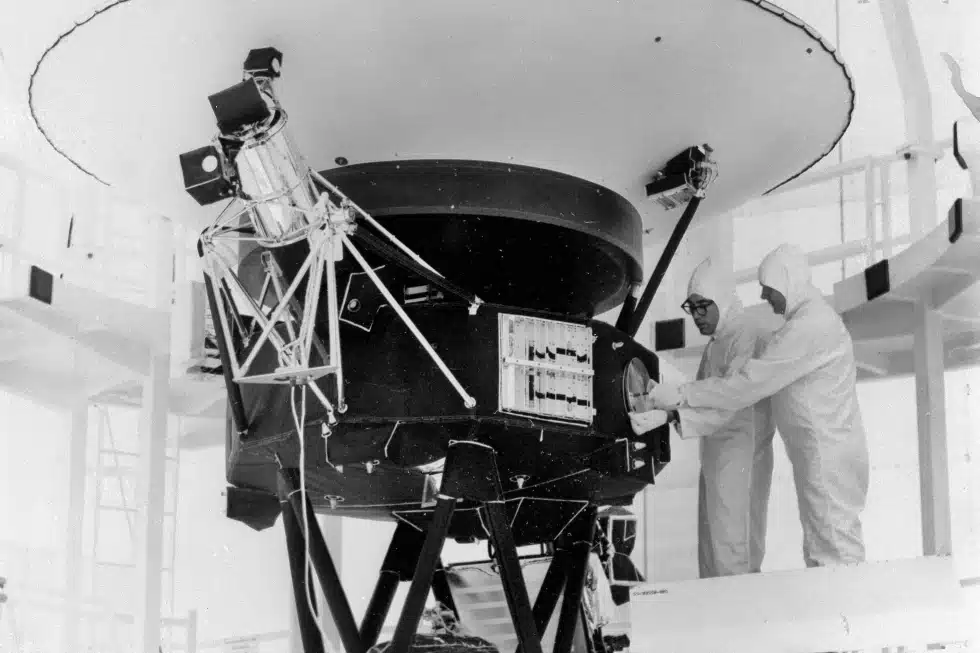
NEW YORK — To save power, NASA turned off another scientific equipment on its long-running Voyager 2 spacecraft.
NASA Switches Off Instrument On the Spacecraft To Save Power
The space agency announced on Tuesday that 2’s plasma science instrument, meant to study the movement of charged atoms, was turned off in late September to allow the spacecraft to continue exploring for as long as possible, which is estimated to be into the 2030s.
NASA turned off a suite of instruments on Voyager 2 and its twin, Voyager 1, after exploring the gas giant planets in the 1980s. Both are currently in interstellar space or the region between stars. The plasma instrument on Voyager 1 stopped working years ago and was finally shut off in 2007.
The remaining four instruments on 2 will continue to collect data on magnetic fields and particles. Its mission is to investigate the regions of space beyond the sun’s protective sphere.
NASA Switches Off Instrument On Voyager 2 Spacecraft To Save Power
It launched in 1977, is the only spacecraft to have visited Uranus and Neptune. It is now more than 12 billion miles (19.31 billion kilometers) from Earth. 1 is more than 15 billion miles (24.14 billion kilometers) beyond Earth.
SOURCE | AP
Science
Hurricane Kirk Could Cause Dangerous Surf Conditions Along The US East Coast
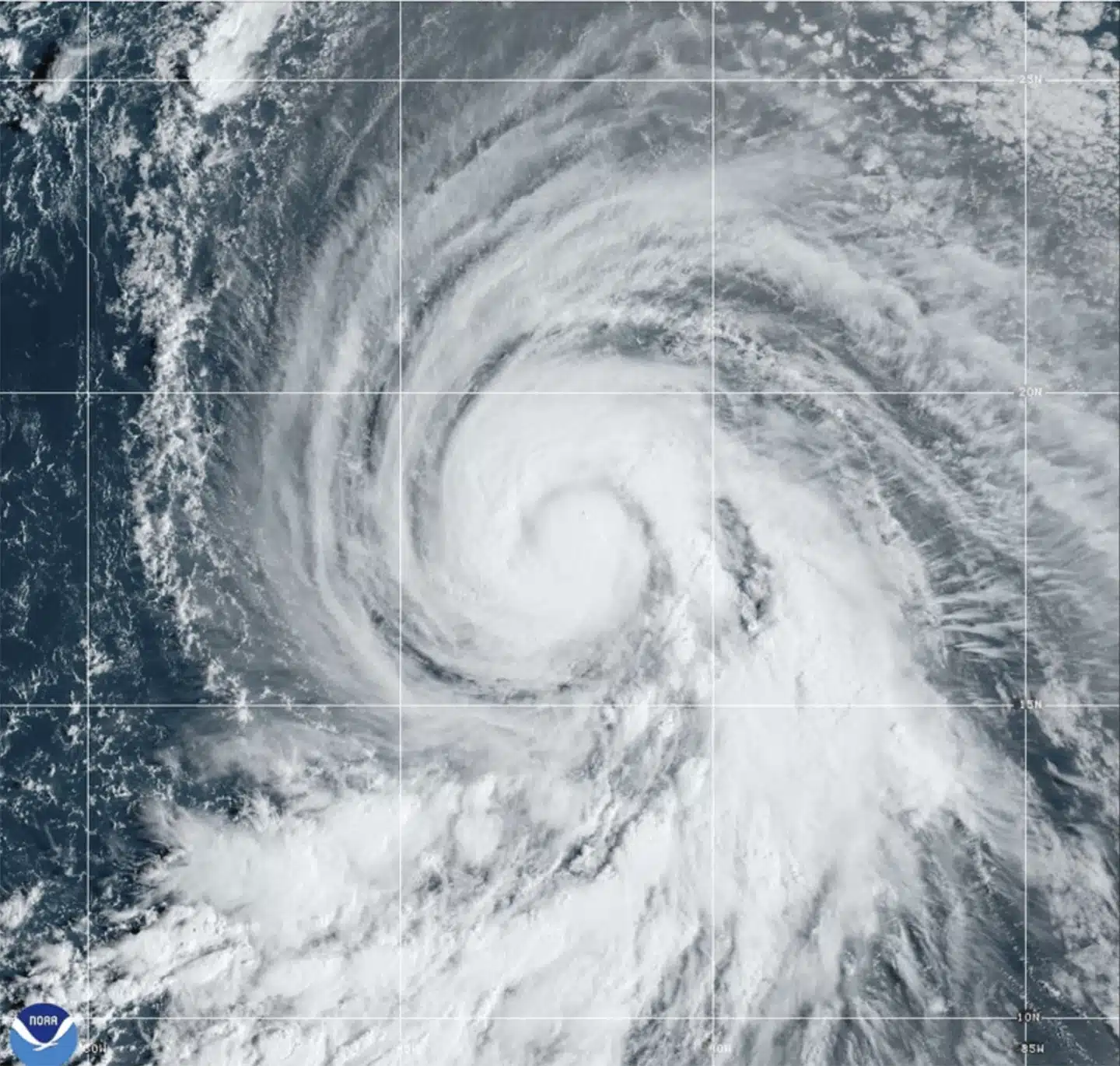
MIAMI — Hurricane Kirk’s waves could generate life-threatening surf and rip current conditions this weekend throughout the United States East Coast, as well as in Bermuda, the Greater Antilles, and the Bahamas, according to forecasters.
Kirk was a Category 3 hurricane in the middle Atlantic Ocean that might grow further but was predicted to stay away from land, according to the Miami-based National Hurricane Center on Thursday.
Hurricane Kirk Could Cause Dangerous Surf Conditions Along The US East Coast
Kirk-generated swells were forecast to reach parts of the Leeward Islands on Friday, Bermuda and the Greater Antilles on Saturday, and the East Coast and the Bahamas on Sunday, according to the center.
No coastal watches or warnings were in effect. The major storm was around 1,130 miles (1,820 kilometers) east of the Leeward Islands, with maximum sustained winds of 125 mph (205 km/h).
Meanwhile, Tropical Storm Leslie formed late Wednesday in the eastern Atlantic and is expected to strengthen into a hurricane in the following days, forecasters said. It was also not considered a threat to the land.
Hurricane Kirk Could Cause Dangerous Surf Conditions Along The US East Coast
The storm was about 540 miles (870 kilometers) southwest of Cabo Verde’s southernmost tip, with maximum sustained winds of 45 mph (75 kph), according to the center.
The storms raged in the Atlantic as rescuers in the United States Southeast sought for missing persons after Hurricane Helene struck last week, leaving a trail of death and devastation.
SOURCE | AP
Science
NASA Sends First Manned Starliner Spacecraft to Space Station
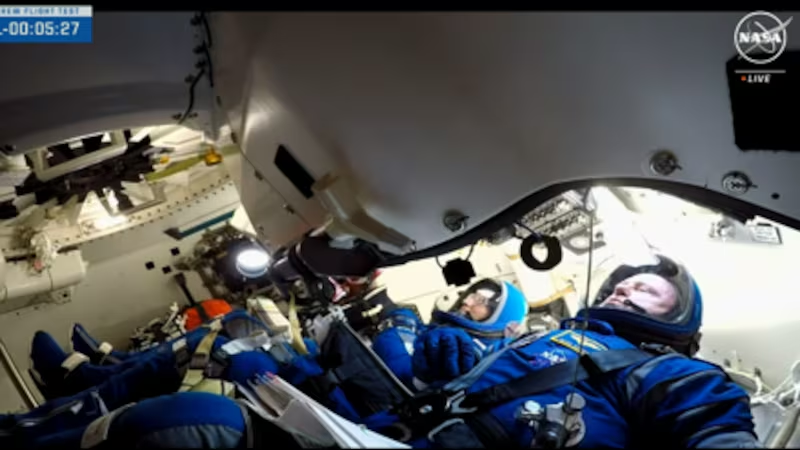
NASA has announced astronauts Butch Wilmore and Suni Williams are safely in orbit on the first crewed flight test of Boeing’s Starliner spacecraft heading for the International Space Station.
As part of NASA’s Boeing Crew Flight Test, the astronauts launched a ULA (United Launch Alliance) Atlas V rocket from Space Launch Complex-41 at Cape Canaveral Space Force Station in Florida at 10:52 a.m. EDT Wednesday for an end-to-end test of the Starliner system.
“Two brave NASA astronauts are well on their way to this historic first test flight of a brand-new spacecraft,” stated NASA Administrator Bill Nelson. “Boeing’s Starliner represents a new era of American exploration. Human spaceflight is a risky endeavor, but it is worth it. It is an exciting time for NASA, our commercial partners, and the future of space exploration. “Go Starliner, Butch, and Suni!”
The flight test is part of NASA’s Commercial Crew Program and will help validate the transportation system, launch pad, rocket, spacecraft, in-orbit operations capabilities, and return to Earth with astronauts aboard as the agency prepares to certify Starliner for rotational missions to the space station. Starliner has already completed two uncrewed orbital missions, including a test to and from the space station, as well as a pad abort demonstration.
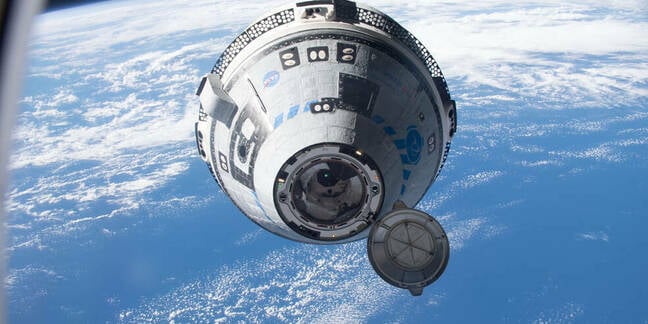
Boeing Starliner Makes Orbit
“With Starliner’s launch, separation from the rocket, and arrival in orbit, Boeing’s Crew Flight Test is right on track,” said Mark Nappi, vice president and program manager for Boeing’s Commercial Crew Program. “Everyone is focused on giving Suni and Butch a safe, comfortable, ride and performing a successful test mission from start to finish.”
Boeing’s mission control center in Houston will supervise a sequence of autonomous spacecraft maneuvers while Starliner is in flight. NASA teams will supervise space station activities from the Mission Control Center at the agency’s Johnson Space Center in Houston.
“Flying crew on Starliner represents over a decade of work by the Commercial Crew Program and our partners at Boeing and ULA,” said Steve Stich, Commercial Crew Program Manager at NASA’s Johnson Space Center in Houston. “For many of us, this is a career-defining occasion, ushering in a new crew transportation capacity for our agency and our country. We will take it one step at a time, putting Starliner through its paces and remaining watchful until Butch and Suni safely land back on Earth at the end of this test journey.”
At about 12:15 p.m., Starliner will dock autonomously to the forward-facing port of the station’s Harmony module. Thursday, June 6, and will remain at the orbital laboratory for almost a week.
Wilmore and Williams will help ensure that the spacecraft is functioning properly by testing the environmental control system, the displays and control system, and moving the thrusters, among other things, during flight.
Wilmore and Williams will join the Expedition 71 crew, which includes NASA astronauts Michael Barratt, Matt Dominick, Tracy C. Dyson, and Jeanette Epps, as well as Roscosmos cosmonauts Nikolai Chub, Alexander Grebenkin, and Oleg Kononenko.
NASA’s arrival and in-flight event coverage is as follows (all times Eastern and subject to change depending on real-time operations):
NASA Television channels will continue to broadcast the Starliner’s mission.
Thursday, June 6
9:30 a.m. – Arrival coverage begins on NASA+, the NASA app, and YouTube, and continues on NASA Television and the agency’s website.
12:15 p.m. – Targeted docking
2 p.m. – Hatch opening
2:20 p.m. – Welcome remarks
3:30 p.m. – Post-docking news conference at NASA Johnson with the following participants:
- NASA Associate Administrator Jim Free
- Steve Stich, manager, NASA’s Commercial Crew Program
- Jeff Arend, manager for systems engineering and integration, NASA’s International Space Station Office
- Mark Nappi, vice president and program manager, Commercial Crew Program, Boeing
Coverage of the post-docking news conference will air live on NASA+, NASA Television, the NASA app, YouTube, and the agency’s website.
To attend the post-docking briefing, U.S. media must contact the NASA Johnson newsroom at: jsccommu@mail.nasa.gov or 281-483-5111 by 1 p.m. Thursday, June 6. To join by phone, media must contact the NASA Johnson newsroom by 3 p.m. Thursday, June 6.
5:50 p.m. – NASA Administrator Bill Nelson, Deputy Administrator Pam Melroy, Associate Administrator Jim Free, Associate Administrator for Space Operations Ken Bowersox, and Johnson Space Center Director Vanessa Wyche will speak with Wilmore and Williams about their launch aboard the Starliner spacecraft.
Coverage of the Earth to space call will air live on NASA+, NASA Television, the NASA app, YouTube, and the agency’s website.
Saturday, June 8
8:50 a.m. – NASA astronauts Wilmore and Williams will provide a tour of Starliner.
Coverage of the in-orbit event will stream live on NASA+, NASA Television, the NASA app, YouTube, and the agency’s website.
Monday, June 10
11 a.m. – Williams will speak to students from Sunita L. Williams Elementary School in Needham, Massachusetts, in an event aboard the space station.
Coverage of the Earth to space call will air live on NASA+, NASA Television, the NASA app, YouTube, and the agency’s website.
Tuesday, June 11
3:15 p.m. – Wilmore will speak to students from Tennessee Tech University in an event aboard the space station.
Coverage of the Earth to space call will air live on NASA+, NASA Television, the NASA app, YouTube, and the agency’s website.
-

 News3 years ago
News3 years agoLet’s Know About Ultra High Net Worth Individual
-
Entertainment2 years ago
Mabelle Prior: The Voice of Hope, Resilience, and Diversity Inspiring Generations
-

 Health3 years ago
Health3 years agoHow Much Ivermectin Should You Take?
-

 Tech2 years ago
Tech2 years agoTop Forex Brokers of 2023: Reviews and Analysis for Successful Trading
-

 Lifestyles3 years ago
Lifestyles3 years agoAries Soulmate Signs
-

 Movies2 years ago
Movies2 years agoWhat Should I Do If Disney Plus Keeps Logging Me Out of TV?
-

 Health3 years ago
Health3 years agoCan I Buy Ivermectin Without A Prescription in the USA?
-

 Learning2 years ago
Learning2 years agoVirtual Numbers: What Are They For?
